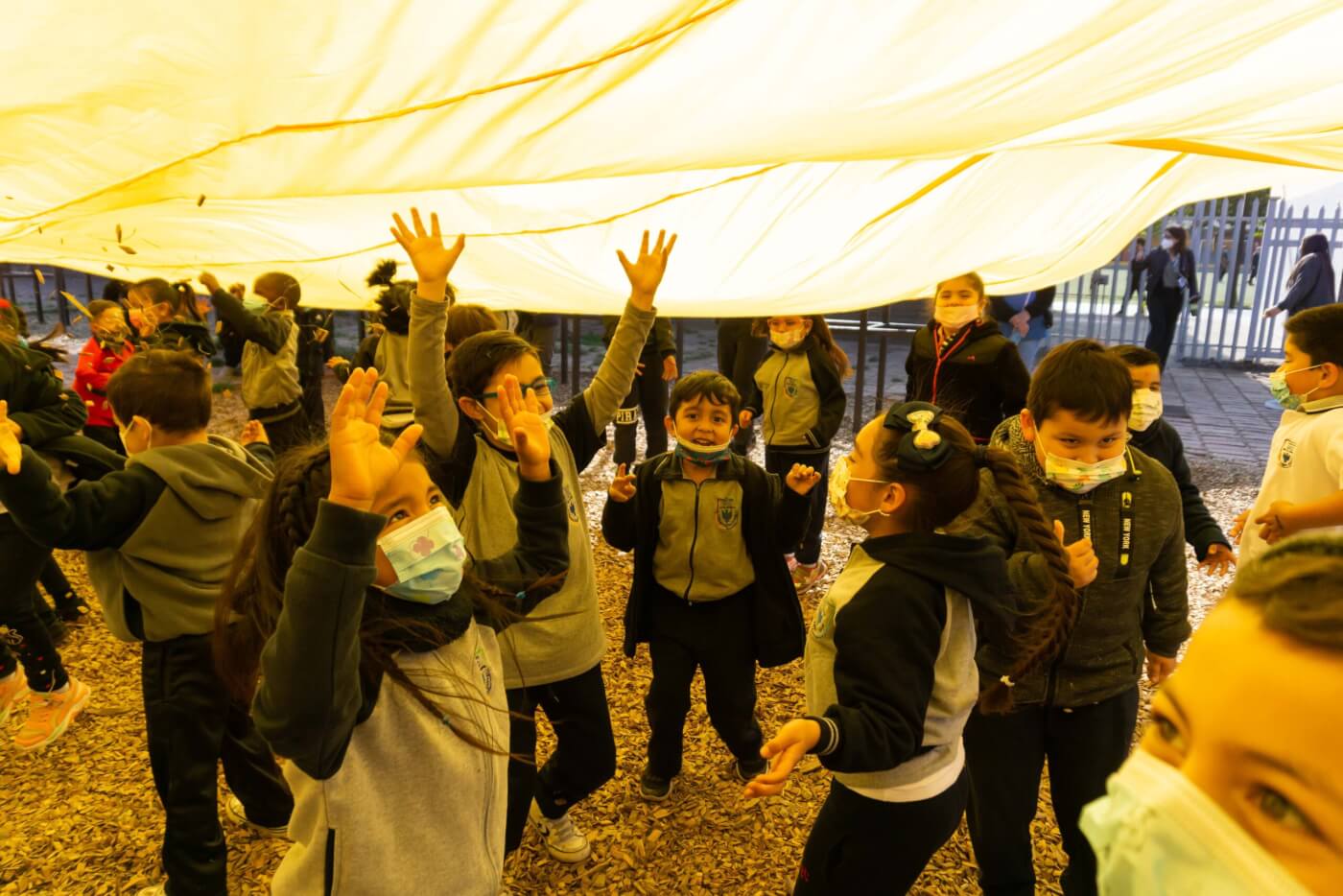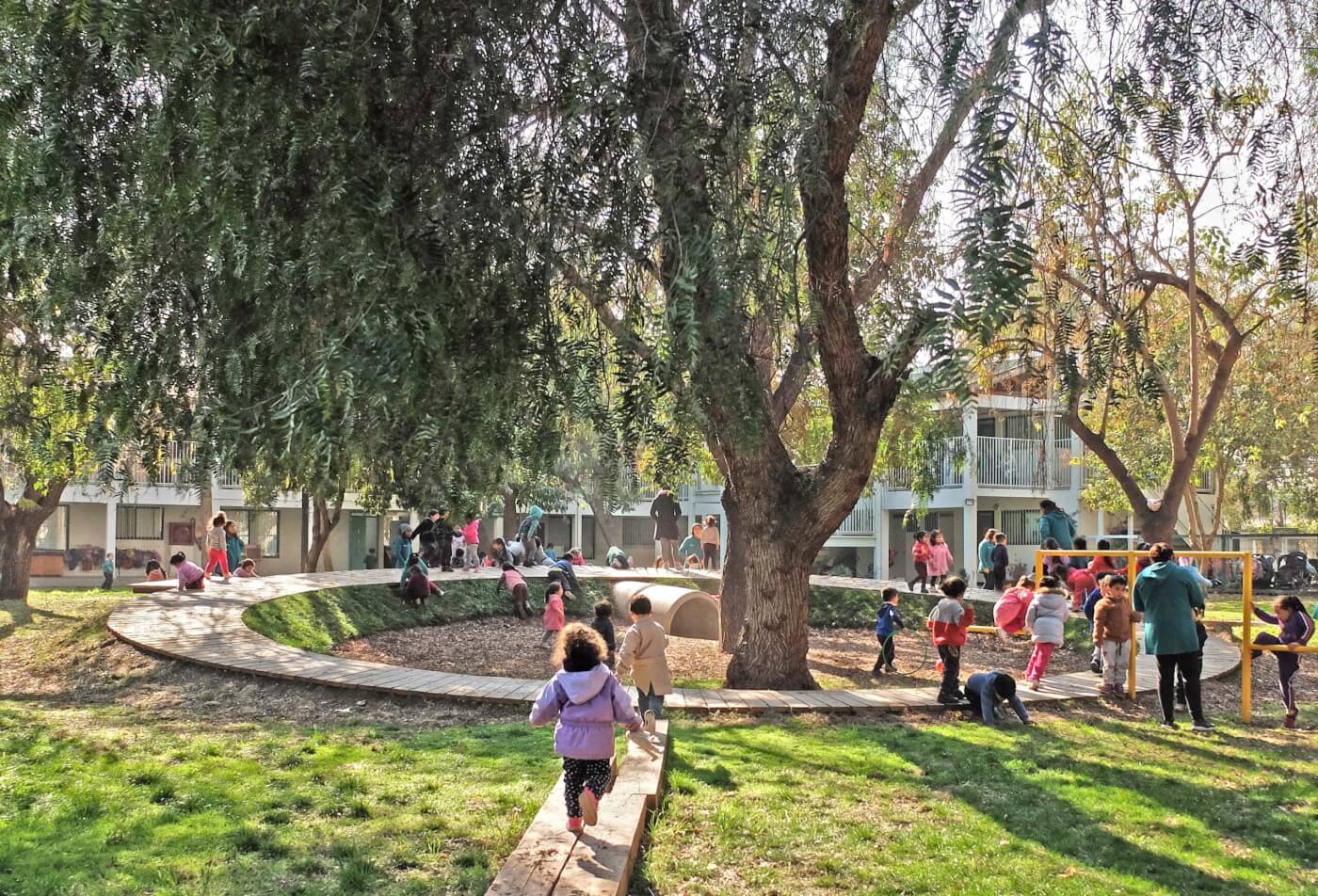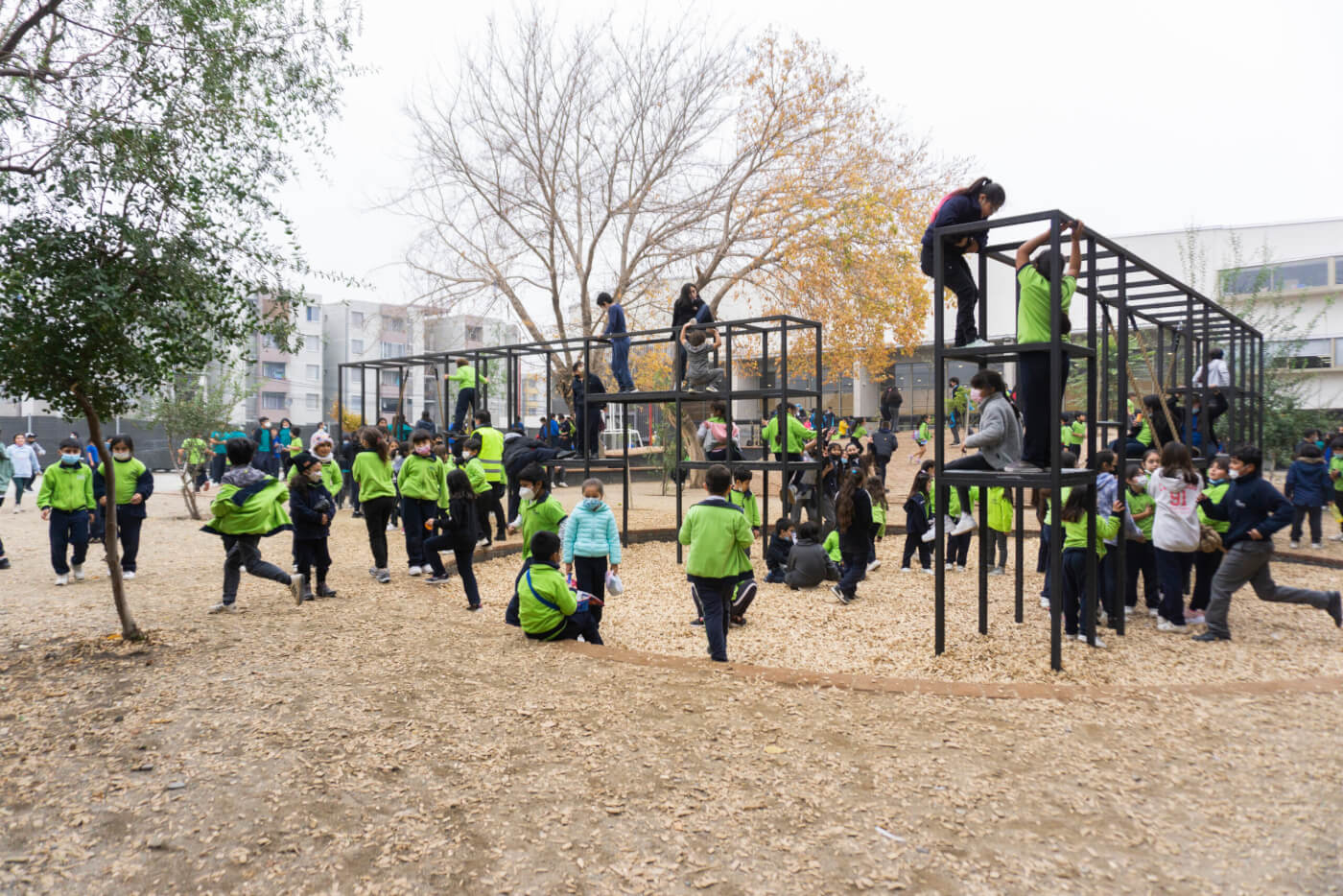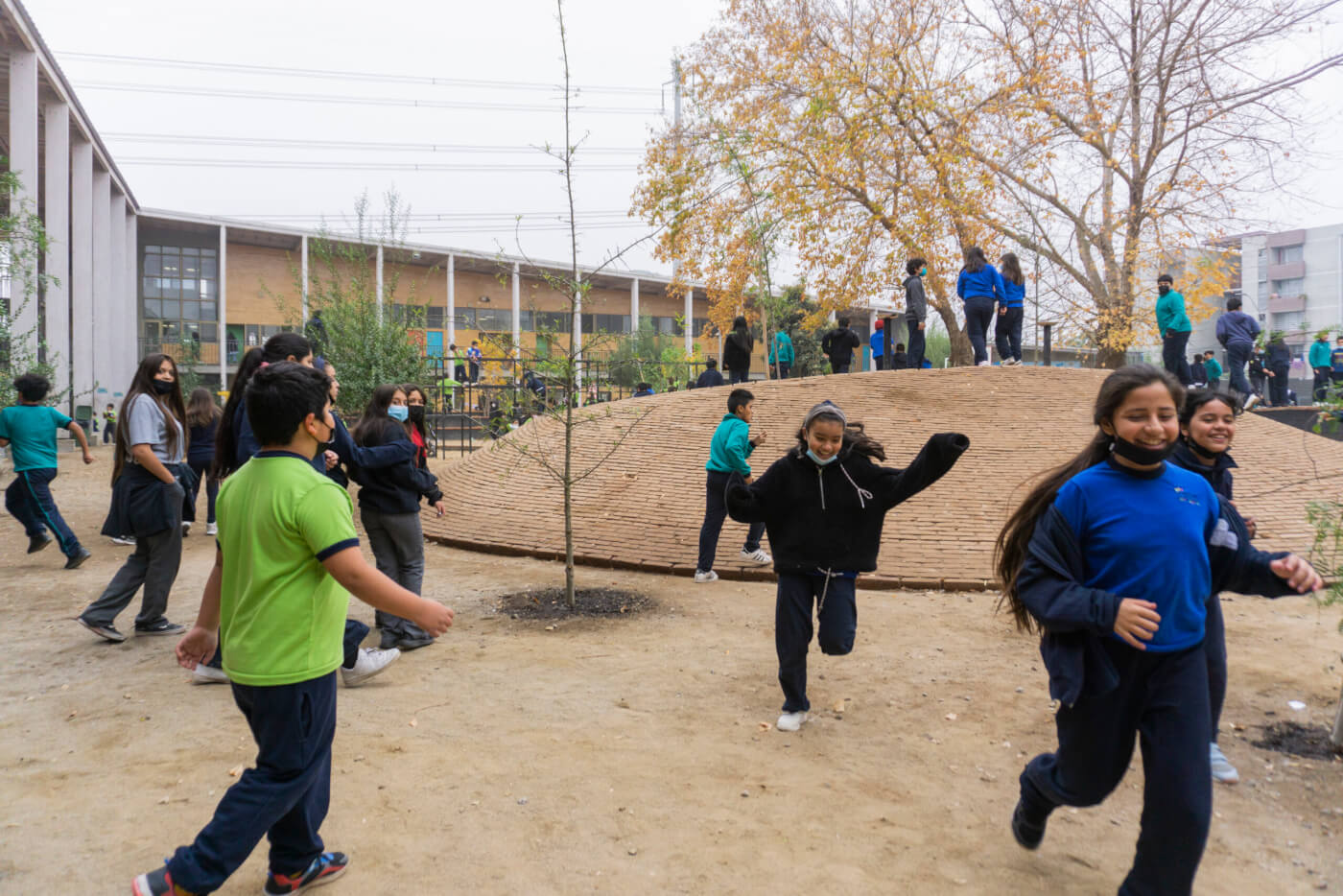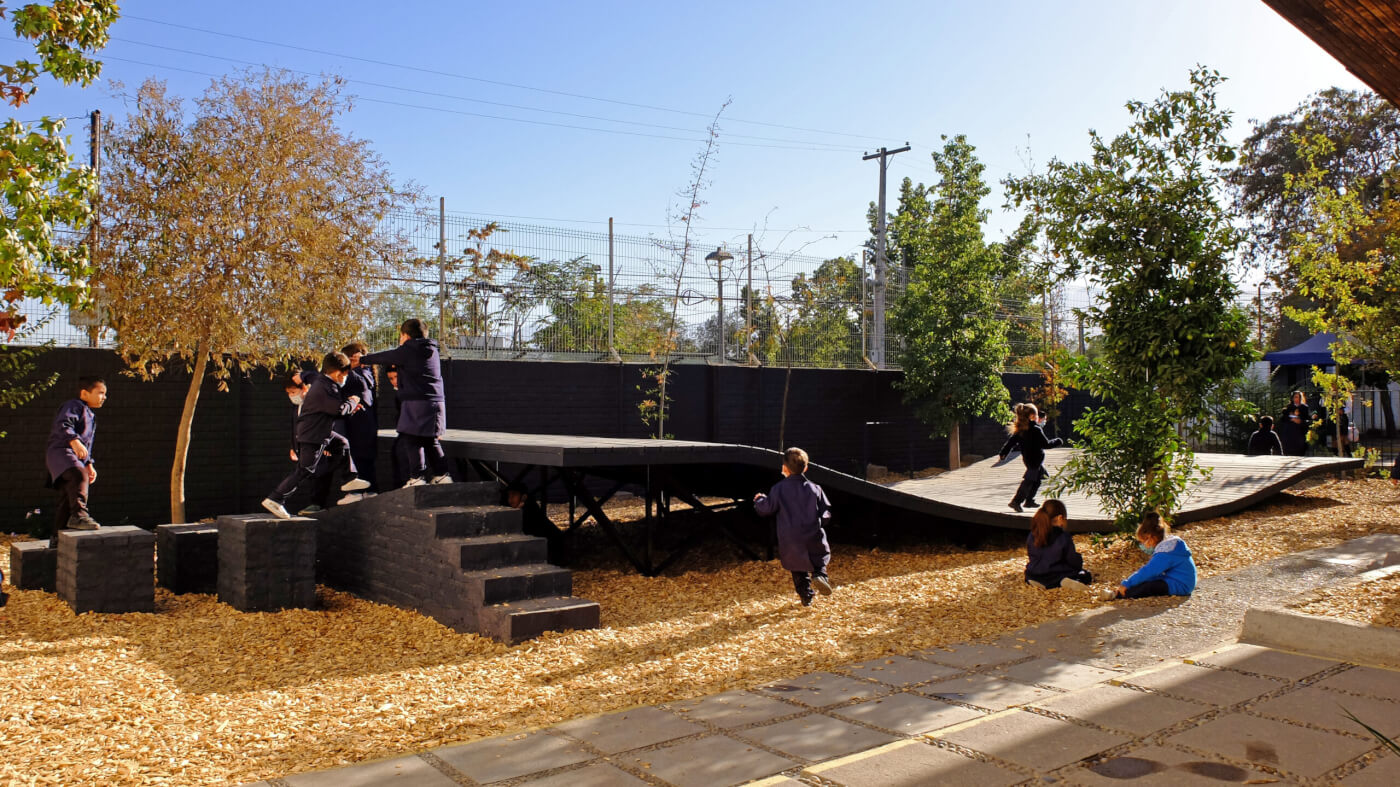Global Lessons on Greening School Grounds and Outdoor Learning
Chile | Fundación Patio Vivo
Fundación Patio Vivo is a nonprofit organization in Chile that aims to give new meaning to schoolyards across all grade levels, promoting a cultural change that supports children and adolescent playing, learning, and growing in contact with nature. Patio Vivo helps improve students’ well-being and quality of life by transforming school grounds in the most vulnerable communities, which typically lack easy and safe access to green areas. Patio Vivo turns spaces once dominated by concrete into fertile areas filled with various tree species and shrubs that create habitat forf birds, insects, and other living beings. Educators, families, and community members are an integral part of the design process and each schoolyard is designed in context to its surrounding environment, celebrating the school’s particular culture and vision for the space.
Find more global case studies.
“The schoolyard offers children the opportunity to discover a sense of place and to explore along with nature, which offers infinite ways of learning,” Angela Ibáñez, Executive Director, Fundación Patio Vivo
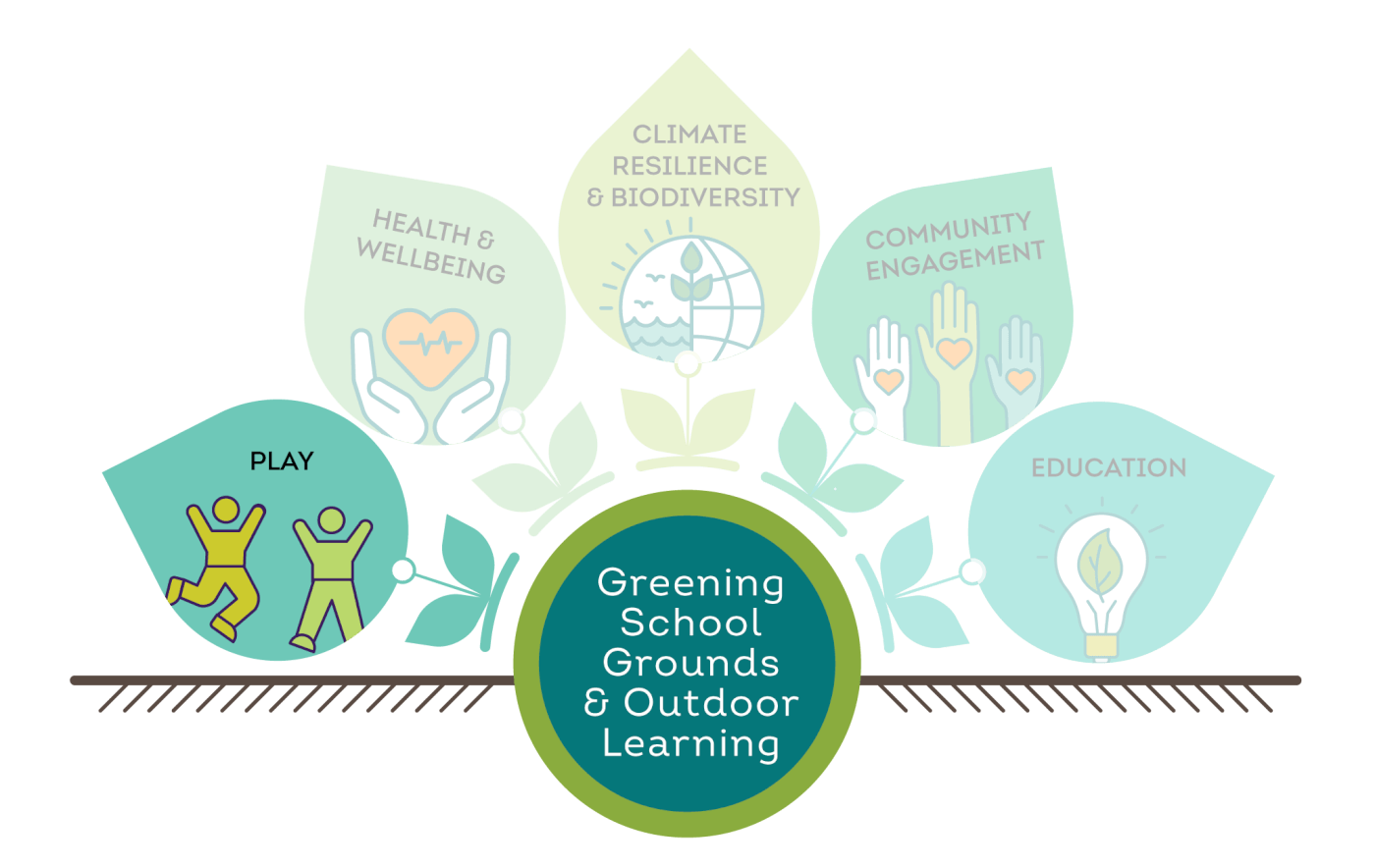
Key Aspects of the Case Study
- Prioritizes play. The newly transformed schoolyards actively promote four types of play: free play, active or directed play, nature play and risky play.
- Scalable. Recognized by UNICEF as one of seven innovative initiatives for early childhood, Patio Vivo has transformed more than 80 school grounds in eight different regions of Chile.
- Equity- and diversity-focused. Patio Vivo prioritizes the transformation of school grounds in vulnerable neighborhoods and where children are in most need of playing and learning opportunities in contact with nature.
School ground features vary from school to school, including things like vegetable gardens, fruit orchards, and multifunctional structures that invite children to play freely and with beneficial risk. On the school grounds, children exercise and develop coordination by running, hanging from bars and ropes, going up and down slopes, and bending down to pass through tunnels. The new spaces aim to spark imagination and creativity, allowing children and adolescents to develop integrally thanks to the environment’s multiple learning opportunities.
“Transforming an old schoolyard into a learning landscape enables use of a space that has been widely underused, opening up new possibilities for children to develop their potential,” Isabel Jiménez, school administrator.


